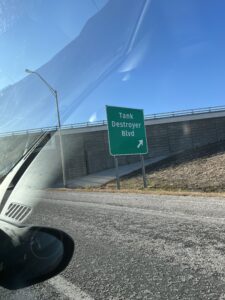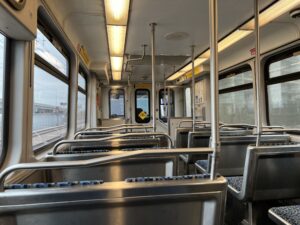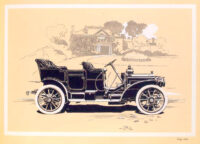I consider myself to be an avid traveler, one who takes every opportunity to venture out and see what the rest of the world has to offer. I’ve gotten fairly skilled at packing my carry-on bag so it just fits into the overhead bin, and I’m pretty good at scoping out a good flight deal. I may not be on a first-name basis with my local TSA agents, but when I have the PTO days, and the means to afford a ticket, I enjoy leaving New York behind to discover how the other half lives.
While I’m always learning lessons on my journeys that make me a better tourist, there is one burden I carry that keeps me from fully immersing myself in the culture I visit. Wherever I go, I take a bit of New York with me. While this can be literally true, depending on the origins of the gravel stuck in the grooves of my sneakers, it rings more true metaphorically. I will leave for any city with unrealistic expectations that its infrastructure will in any way resemble that of NYC’s. I presume that I will be able to explore using the same means I successfully employ when galavanting around my home city (as I’ve written about on the internet before). American cities in particular disappoint me to no end. New York City, for the most part, distinguishes itself from all other domestic metropolises by the extent to which it encourages residents to eschew cars and travel by other, more sustainable means.

During my most recent trip, a somewhat spontaneous jaunt that took me through the heart of Texas, I once again found myself falling back on my usual transportation habits. In typical Jacob fashion, I decided to forgo a rental car for the duration of my vacation, choosing instead to get around to most places by walking or public transit. Intentionally choosing to go anywhere in Texas without a car, especially by foot, is a choice. On many streets, sidewalks abruptly end, forcing unlucky pedestrians like me to reopen Google Maps to reluctantly find the safest way to cross an Austin highway. As opposed to New York City, where almost every street has at least one sidewalk adjacent, Greg Abbott can’t guarantee your safety when trying to walk the most direct route from point A to point B. Even when there were sidewalks, it often felt as if I were walking in a space not truly meant for pedestrians. I genuinely embodied the meme of New Yorkers walking anywhere, though unfortunately cities in Texas couldn’t quite keep up.
Wherever and whenever I was out in Texas, I was struck by how empty the streets were (save for the cars…so many cars). I often had the sidewalk to myself for blocks on end. The only fellow pedestrians I saw with any regularity were dog walkers, and even they were few and far between. Weather may have played a factor, as there were several days when temperatures fell to near or (way) below freezing. Even when it was almost 60 degrees and sunny, however, it was nearly impossible to run into anyone. I was especially surprised that parts of cities that could be considered central, “downtown” neighborhoods were almost devoid of anyone at all times of day. On a visit to Dallas’ trendy Deep Ellum neighborhood on a Friday night, aside from the more than 100 people in Pecan Lodge, both the sidewalks and most of the other bars/restaurants were essentially barren. Sundance Square in Fort Worth was abandoned in the late afternoon on a Saturday. Coming from a city where there’s a constant buzz in popular neighborhoods around the clock, I was often left wondering where everyone was!

Don’t get me wrong. I’m not trying to be a Coastal Elite telling Texans how to live their lives. The Texas highway system has birthed some of America’s finest treasures, such as Buc-ee’s (see Exhibit A). Texas, and much of the rest of the country, has grown to love their cars and driving around in them. There were a few times on my journey when I resigned myself to call an Uber, mostly when walking or taking transit were impossible. Whether the country’s infatuation with cars is due to the independence it grants a driver, or the result of a long-running shadow campaign by the auto, tire, and gas industries, we may never know. Whatever the case may be, though cars may appear beneficial to those driving them, and spur a few institutions that improve the greater society as a whole, that still doesn’t excuse the negative impact they have with regards to making cities across the country feel like ghost towns. Texas is surely not an outlier when it comes to tumbleweeds rolling down Main Street, USA (Disney excluded).

I’d be remiss if I didn’t mention how surprised I was to discover how robust the transit options were in Dallas (at least for a non-NYC city). There’s a nice variety of rail and bus options in the city, with every vehicle I was in arriving promptly and fairly clean. In particular, the GoPass app made it easy to buy tickets to ride in Dallas, nearby Fort Worth, and other surrounding areas, though I may not have accurately identified the difference between the streetcar and light rail (I likely saved some money buying streetcar tickets by accident that were never checked by transit staff). Rail never seemed like it was well utilized though, with trains often close to empty every time I rode one. Dallasites are squandering the one good transportation-related thing they have, choosing instead to use their own personal vehicles when a serviceable public transit option exists.
It’s clear that an over-reliance on cars for transportation leads to deserted sidewalks, creating a feeling of loneliness for anyone who finds themselves standing on the side of the road. Being able to see people existing outside of their cars makes a city feel more like a place people live, not just another thruway. If I had decided to rent a car instead of bumming it around on my two feet, I’d probably have a lot to say about the traffic on I-35, or how it seemed that everyone was on the road at the exact same time I was. In that scenario, Texas may have felt absolutely packed to the brim. Instead, by taking the (side of the) road less traveled, I discovered parts of town I never would have in a car, and left the state believing I’d gotten a good idea of the lay of the land.
